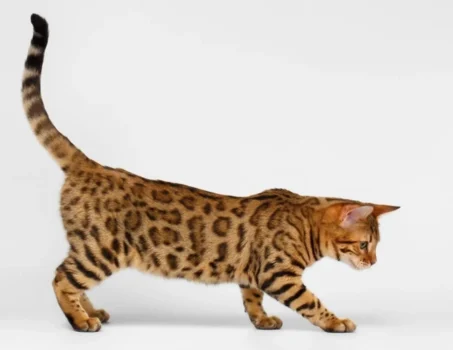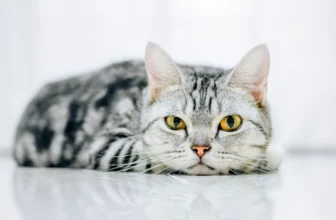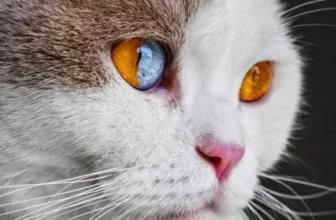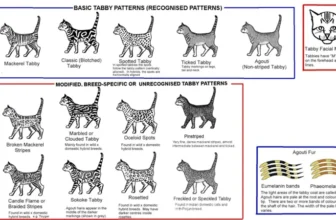As cat owners, we always want our feline friends to be happy and healthy. One important aspect of their overall health is their eye health. California Spangled cats are unique and majestic creatures that require special attention when it comes to eye care. However, knowing how to properly care for their eyes can be perplexing. That’s why we’ve put together this comprehensive guide with step-by-step instructions to help you take care of your California Spangled’s eyes. By following these tips and tricks, you can ensure that your furry friend’s eyes stay healthy and clear for years to come.
Understanding Your California Spangled’s Eye Health
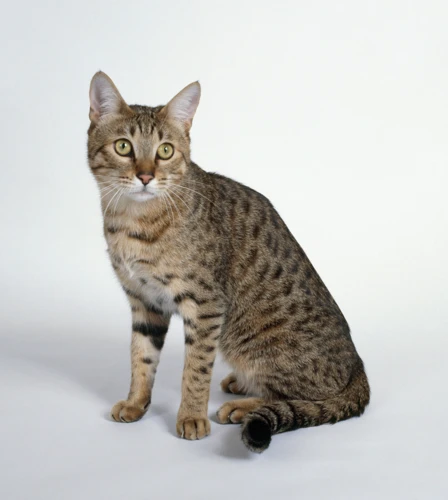
It is important to understand the eye health of your California Spangled cat to ensure that they are in optimum condition. A good way to start is by knowing the normal appearance of their eyes and understanding the common eye problems they may encounter. Did you know that California Spangled cats are known for their heterochromatic eyes? You can read more about this unique eye trait in our article on California Spangled Cat Heterochromatic Eyes. The eye color of your cat can tell a lot about their genetics and age. Learn more about California Spangled’s eye color from our other articles on Cal Spangled Cats Green Gold Eyes, Beauty of Amber Eyes in California Spangled Cats, and California Spangled Cat Eye Colors and when their eye color could signal an underlying concern about their health in our article on California Spangled Cats Eyes Age.
1. Know the Normal Appearance of Their Eyes
It is important to know the normal appearance of your California Spangled’s eyes so that you can quickly identify any changes or issues that may arise. The eyes of a California Spangled cat are typically large and round with a vivid, clear color. The iris can range in color from gold to green, amber, or even blue. The pupils should be symmetrical in size and shape, and respond to changes in light.
Gold-green eyes are the most common color for California Spangled cats and are determined by their genetics. These dominant genes responsible for eye color have been studied by many feline geneticists over the years. Conversely, blue eyes are less common in cats and usually indicate a lack of melanin in the iris. They can occur in California Spangled cats and are often seen in white cats due to the gene responsible for their coat’s lack of pigment.
Observing the eyes of your cat frequently can help you identify if there is any discharge, redness, or swelling. Any of these symptoms may indicate an underlying condition that requires attention from a veterinarian. Additionally, you can help protect the eye’s overall health by keeping foreign objects out of their environment and out of reach of your feline companion.
Understanding the genetics behind eye color in California Spangled cats can help you have a better understanding of why their eyes look the way they do. Paying attention to your California Spangled’s eye color and any changes can be a great way to keep them healthy, happy, and comfortable for a long time.
2. Common Eye Problems to Watch for in California Spangled Cats
California Spangled cats are generally a healthy breed, but there are some common eye problems that owners should be aware of. These problems can be caused by various factors such as genetics, injury, or infection. It is important to monitor your cat’s eyes regularly for any changes in appearance or behavior that may indicate a problem. Below are some common eye problems to watch for in California Spangled Cats:
- Conjunctivitis: Also known as pink eye, conjunctivitis is an infection of the conjunctiva, the clear membrane that lines the inner eyelid and covers the white part of the eye. This condition can be caused by bacteria, viruses, or allergens. Symptoms include redness, discharge, and itching.
- Cataracts: Cataracts are a clouding of the eye’s lens, which can cause blurred or fuzzy vision. This condition can be caused by genetics, injury, or aging. California Spangled cats with lighter eye colors may be more prone to developing cataracts.
- Glaucoma: Glaucoma is a condition in which the pressure inside the eye increases, causing damage to the optic nerve. This can lead to blindness if left untreated. California Spangled cats with blue eyes may be more prone to developing glaucoma.
- Corneal Ulcers: Corneal ulcers are open sores on the cornea, the clear outer layer of the eye. They can be caused by injury, infection, or a foreign object in the eye. Symptoms include redness, discharge, and tearing.
- Scratched Cornea: A scratched cornea, also known as a corneal abrasion, can be caused by injury or a foreign object in the eye. Symptoms may include tearing, squinting, and sensitivity to light.
Remember that prevention is always better than cure. Regular check-ups with a vet can help catch any eye problems early on. Maintaining good eye hygiene and ensuring your California Spangled cat receives a balanced diet can help prevent some of these problems from developing. If you notice any changes in your cat’s eyes, seek veterinary attention immediately to prevent any further complications.
For more information on California Spangled cats, check out our article on California Spangled Cat Eye Colors.
Caring for Your California Spangled’s Eyes
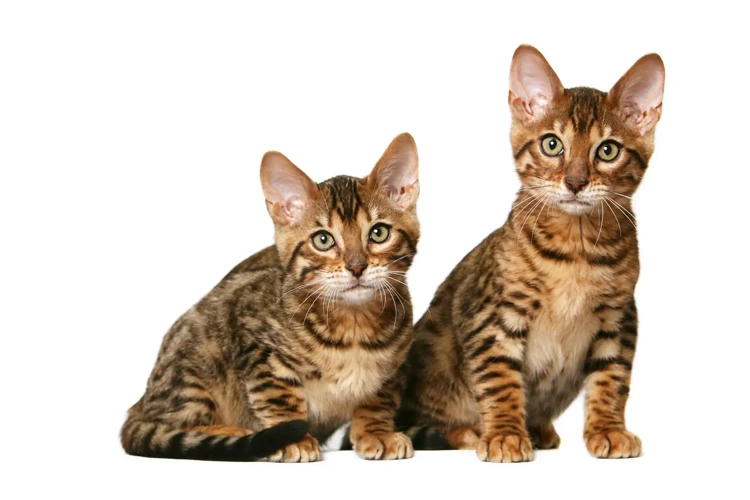
Taking care of your California Spangled’s eyes is an essential part of keeping your feline friend healthy and happy. Their eyes are not only a window to their beautiful soul; they’re also an indicator of their overall health. By paying attention to your cat’s eyes and acting promptly if you notice any problems, you can help protect your furry companion’s vision. Proper eye care consists of several essential steps, from regular cleaning to a well-balanced diet. It’s crucial to understand the different aspects of eye care to ensure that your cat enjoys optimal eye health. In the following sections, we’ll dive deeper into how you can care for your California Spangled’s eyes to promote their good health and well-being. Let’s get started!
1. Regular Cleaning of their Eyes
Regular cleaning of your California Spangled’s eyes is crucial for maintaining their eye health. It is necessary to help remove any dirt or debris that may accumulate on or around the eyes and to keep them free from any dirt, dust, or other irritants that could cause eye-related problems.
To clean your California Spangled’s eyes, follow these simple steps:
| Step | Description |
|---|---|
| Step 1 | Wash your hands before you begin to prevent any dirt or bacteria from transferring to your cat’s eyes. |
| Step 2 | Soak a clean, soft cloth in warm water and wring out the excess water. |
| Step 3 | Gently hold your cat’s head in one hand while using the other hand to gently wipe away any discharge or dirt that may have collected around the eye. Start at the inner corner of the eye and wipe outward. |
| Step 4 | Use a separate piece of cloth for each eye to prevent any potential spread of infection if there is one. |
| Step 5 | After cleaning their eyes, wipe their eyes down with a clean, dry cloth. Don’t let moisture linger on or around your cat’s eye. |
Cleaning your cat’s eyes regularly can be an easy way to help prevent eye-related issues. Regular eye cleaning can help you to spot any visible eye infections or other issues that may require veterinary attention. Additionally, cleanliness around your cat’s eyes helps to prevent health problems caused by dirt, dust, or other irritants that may lead to infections or allergies.
Remember, your California Spangled’s eyesight is precious and needs to be treated with serious attention and care. If you want to know more about your California Spangled’s eye color, check out our article about it.
2. Provide a Nutritious Diet
A nutritious diet is essential in maintaining your California Spangled’s overall health, including their eye health. Feeding your cat a well-balanced diet with the necessary nutrients helps reduce the risk of eye problems that may occur. Below is a list of essential nutrients and the recommended daily amounts for cats:
| Nutrient | Recommended Daily Amount for Cats | Sources |
|---|---|---|
| Vitamin A | 3,000 to 5,000 IU | Liver, egg yolk, dairy products, and fish oil |
| Omega-3 and Omega-6 Fatty Acids | 1.1% to 2.2% of the diet | Sardines, salmon, herring, and flaxseed oil |
| Taurine | 500 to 2,000 mg | Poultry and beef hearts, liver, and kidneys |
| Zinc | 15 to 30 mg | Beef, pork, and chicken |
It is important to note that feeding your cat a homemade diet requires special attention to proportion and nutrient balance to prevent deficiency or toxicity. If you are unsure about what to feed your California Spangled to maintain their eye health, consult your veterinarian or a veterinary nutritionist.
Additionally, always make sure your cat has access to fresh, clean drinking water. Dehydration can lead to eye irritation and other health problems. Providing moisture-rich food, such as wet or canned food, can also support your cat’s eye and overall health.
By providing your California Spangled with a nutritious diet and access to clean drinking water, you can help maintain good eye health and reduce the risk of potential eye problems.
3. Minimize Stress and Anxiety
As cats are highly sensitive creatures, stress and anxiety can take a toll on their overall health and well-being. When it comes to the health of your California Spangled’s eyes, minimizing their stress and anxiety is crucial. Stress and anxiety can lead to various eye conditions like watery eyes, cloudy eyes, and even blindness. Luckily, there are several things you can do to minimize your feline friend’s stress and anxiety.
| Ways to Minimize Stress and Anxiety | Description |
|---|---|
| Provide a Safe, Comfortable Environment | Make sure your California Spangled has a safe and comfortable environment to live in. Provide them with a cozy bed, toys, and a scratching post. This will help them feel secure and relaxed. |
| Keep Their Environment Clean | Clean your feline companion’s litter box regularly to avoid creating an environment that is unpleasant and unsafe. Make sure their living space is free of any unpleasant odors or unnecessary noise. |
| Give Them Plenty of Attention and Love | As social creatures, California Spangled cats need plenty of attention and love. Make sure to spend quality time with your feline friend every day. Playing with them, talking to them, and petting them will help them feel loved and comforted. |
| Use Pheromone Products | Pheromone products like diffusers and sprays can help calm your California Spangled. These products mimic the scent that cats give off when they are relaxed and happy. Using these products in their living space can go a long way in reducing their stress and anxiety. |
| Avoid Sudden Changes | As much as possible, avoid sudden changes that can disrupt your feline friend’s routine. This includes changes in their diet, living environment, and daily routine. Gradual changes are always better than sudden ones. |
By following these tips, you can minimize the stress and anxiety in your California Spangled cat’s life. Thus, ensuring that they stay healthy and free from eye problems. However, if your cat is already displaying signs of eye problems, it’s vital to seek help from a vet. You can find more information on California Spangled cats and blue eyes on our website.
4. Make Regular Visits to the Vet
Taking your California Spangled for regular check-ups to the vet is necessary for maintaining their overall health and ensuring that their eyes remain healthy. During these visits, the vet will examine your pet’s eyes carefully and evaluate any potential abnormalities. Here are some reasons why making regular visits to the vet is crucial for your feline companion’s eye health:
- Preventing Eye Issues: Regular visits to the vet can help prevent eye problems from developing in your California Spangled. Since cats are great at hiding pain, it may be difficult to notice any problems with their eyes unless an experienced vet examines them. By visiting the vet regularly, potential issues can be detected in the early stages, allowing for prompt treatment and prevention of further complications.
- Updating Vaccinations: Vaccinations play a crucial role in maintaining your California Spangled’s health and wellbeing. Certain viruses and bacteria can cause eye infections in cats, which can lead to blindness if left unaddressed. By ensuring that your cat’s vaccinations are up-to-date, you can minimize the likelihood of such infections and keep your cat’s eyes healthy.
- Monitoring Existing Eye Conditions: If your California Spangled already has a pre-existing eye condition, such as a corneal ulcer or conjunctivitis, regular visits to the vet are even more crucial. These conditions need to be monitored closely and treated appropriately to prevent them from worsening over time, causing discomfort and potentially even loss of vision for your feline companion.
Regular visits to the vet are vital for maintaining your California Spangled’s eye health. These visits allow your vet to detect potential issues early on, update your cat’s vaccinations, and monitor pre-existing eye conditions, ensuring that your furry friend’s eyes remain healthy and sparkling.
When to Seek Help From a Vet
As a responsible cat parent, it is essential to know when your feline companion needs veterinary care. In regards to their eye health, recognizing signs that indicate a problem with your California Spangled’s eyes is crucial. Although most eye issues are treatable, ignoring them can cause irreversible damage. In this section, we’ll explore what signs to look for and what tests your vet may perform to ensure your cat’s eyes stay healthy.
1. Signs that Your California Spangled’s Eyes Need Attention
Observing your California Spangled’s eyes on a regular basis can help you catch any issues before they become serious problems. Here are some signs that your furry friend’s eyes need immediate veterinary attention.
| Signs | Description |
|---|---|
| Discharge | If you notice eye discharge that is yellow or green, or mucus-like, it could be a sign of an infection. |
| Redness | Redness around the eye area could be an indication of an infection, an injury, or a condition like conjunctivitis. |
| Cloudy Eyes | If your California Spangled’s eyes look cloudy, it could be a sign that their vision is impaired. This could be due to cataracts, glaucoma, or other health issues. |
| Excessive Tearing | If your cat’s eyes appear to tear excessively, it could be due to something as simple as allergies, or something more serious like a corneal ulcer. |
| Changes in Pupil Size | Dilated or constricted pupils that do not react to light can be a sign of an underlying health problem affecting the eye or the nervous system. |
It is essential to seek the advice and treatment from a vet if you notice any of these symptoms to ensure prompt and effective care for your California Spangled’s eye health. Remember, early detection and treatment can prevent severe and irreversible damage to your cat’s vision.
2. Tests Your Vet May Perform on Your Feline Companion
When you take your California Spangled cat to the vet to have their eyes examined, there are several tests the vet may perform to diagnose any underlying issues. Below are some of the common tests your vet may use on your feline companion:
- Fluorescein Staining: This is a simple and quick test that involves applying a special fluorescent dye to the surface of the eye. The dye sticks to areas of the eye that have been damaged, making the damaged areas show up green under a blue light. This test can identify issues such as corneal ulcers or scratches.
- Tonometry: This test measures the pressure of the fluid inside the eye and is often used to diagnose glaucoma in cats. A special device is used to gently press against the eye to measure the pressure.
- Ophthalmoscopy: This is a more detailed exam of the inside of the eye. The vet will dilate your cat’s pupils and then use a handheld lens to examine the retina and other structures at the back of the eye for signs of inflammation, bleeding or other abnormalities.
- Blood Tests: Some eye problems can be caused by underlying health issues. Blood tests can help identify issues such as a vitamin deficiency or an infection that may be affecting your cat’s eye health.
It’s important to note that these tests may not be necessary in every case, and your vet will use their professional judgment to determine which tests are appropriate for your cat’s individual situation. Don’t hesitate to ask your vet any questions you may have about the testing process so you can stay informed about your cat’s eye health.
Conclusion
After reading this article, you should now have a better understanding of how to best care for your beloved California Spangled’s eyes. Remember, it’s vital to be vigilant in observing any changes to their eyes, as early detection and treatment of any issues can prevent more significant problems down the road.
Regular cleaning of their eyes, providing them with a nutritious diet, minimizing stress and anxiety, and visiting the vet regularly are all important steps you can take to maintain their eye health. Additionally, knowing what signs to look for and what tests your vet may perform can help give you peace of mind and ensure that your feline companion receives the best care possible.
Remember, cats can’t tell us when something is wrong with their eyes, so it’s up to us as their caretakers to be proactive in keeping their eyes healthy. By following the steps outlined in this article, you can be confident that you’re doing all that you can to keep your California Spangled happy and healthy for years to come.
Frequently Asked Questions
1. Can California Spangled cats go blind?
Yes, just like any other cat, California Spangled cats can go blind due to genetic conditions, injuries, or other health-related issues. It is important to monitor their eye health regularly.
2. How often should I clean my California Spangled’s eyes?
You should clean your California Spangled’s eyes once or twice a week, or more frequently if you notice discharge or debris in their eye area.
3. What kind of diet is best for my California Spangled’s eye health?
A diet rich in antioxidants, Omega-3 fatty acids, and Vitamin A is ideal for maintaining good eye health in California Spangled cats.
4. Do California Spangled cats have a higher risk of eye infections?
There is no evidence to suggest that California Spangled cats have a higher risk of eye infections than other cat breeds.
5. Can stress cause eye problems in California Spangled cats?
Yes, stress and anxiety can cause a range of health problems in cats, including eye issues, so it is important to minimize stress in your California Spangled’s environment.
6. What should I do if I notice my California Spangled’s eyes are red or swollen?
You should take your cat to the vet as soon as possible, as red or swollen eyes can be a sign of serious health problems.
7. Is it safe to use human eye drops on my California Spangled?
No, human eye drops can be harmful to cats and should never be used on them. Speak with your vet about safe eye drops for cats.
8. How can I prevent eye injuries in my California Spangled?
You can prevent eye injuries in your California Spangled by keeping dangerous objects out of their reach and being cautious with toys and other play objects.
9. What are some signs of vision problems in California Spangled cats?
Signs of vision problems in California Spangled cats can include bumping into objects, being hesitant to jump or climb, and squinting or blinking excessively.
10. Why is it important to take my California Spangled to the vet for regular eye exams?
Regular eye exams can help catch potential eye health problems early on, which can lead to more successful treatments and better long-term health for your California Spangled.

